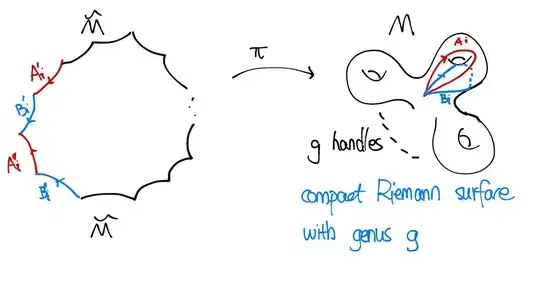I occured in this question when I was learning the proof of the Riemann-Roch theorem for effective divisors with the vedio here(Sorry for this vedio is in Chinese, though the blackboard is written in English).
Suppose we have a compact Riemann surface $M$, and $\eta$ a abelian differential of the second kind(all poles has Residue $0$), and $\widetilde{M}$ the universal covering space of $M$. I saw such an argument:
Since $\eta$ has no simple poles, its pullback $\pi^* \eta$ in $\widetilde{M}$ has no simple poles too. Again by $\widetilde{M}$ being simply connected. $\int^{z}_{z_0} \pi^* \eta$ defines a meromorphic function $f(z)$ on $\widetilde{M}$ such that $\textrm{d}f = \pi^* \eta$.
The question I has is that altough considering $M$ as a topological manifold, its universal covering map $\pi: \widetilde{M} \to M$ is continuous. But here I believe that $\widetilde{M}$ should be constructed such that it has a $2$-complex structure and the covering map $\pi$ should be a holomorphic map.
My Questions:
- How to define the complex structure on $ \widetilde{M} $ such that the covering map $\pi$ is a holomorphic map? I think a way to define it is using the homotopy classs on $M$, but such a way does not give a $4g$-gon visualization.
- If directly constructing $ \widetilde{M} $ via pasting many $4g$-gons, how to paste it together? for $g=2$ it's easy to imagine. But for $g > 2$ I cannot imagine it.
- Does the proof for Riemann Roch theorem in the effective divisors case rely on the universal covering? In the vedio I watched, it has to pullback some form and integrating it in the boundary of the $4g$-gon to get the Period matrix.
Thanks!
